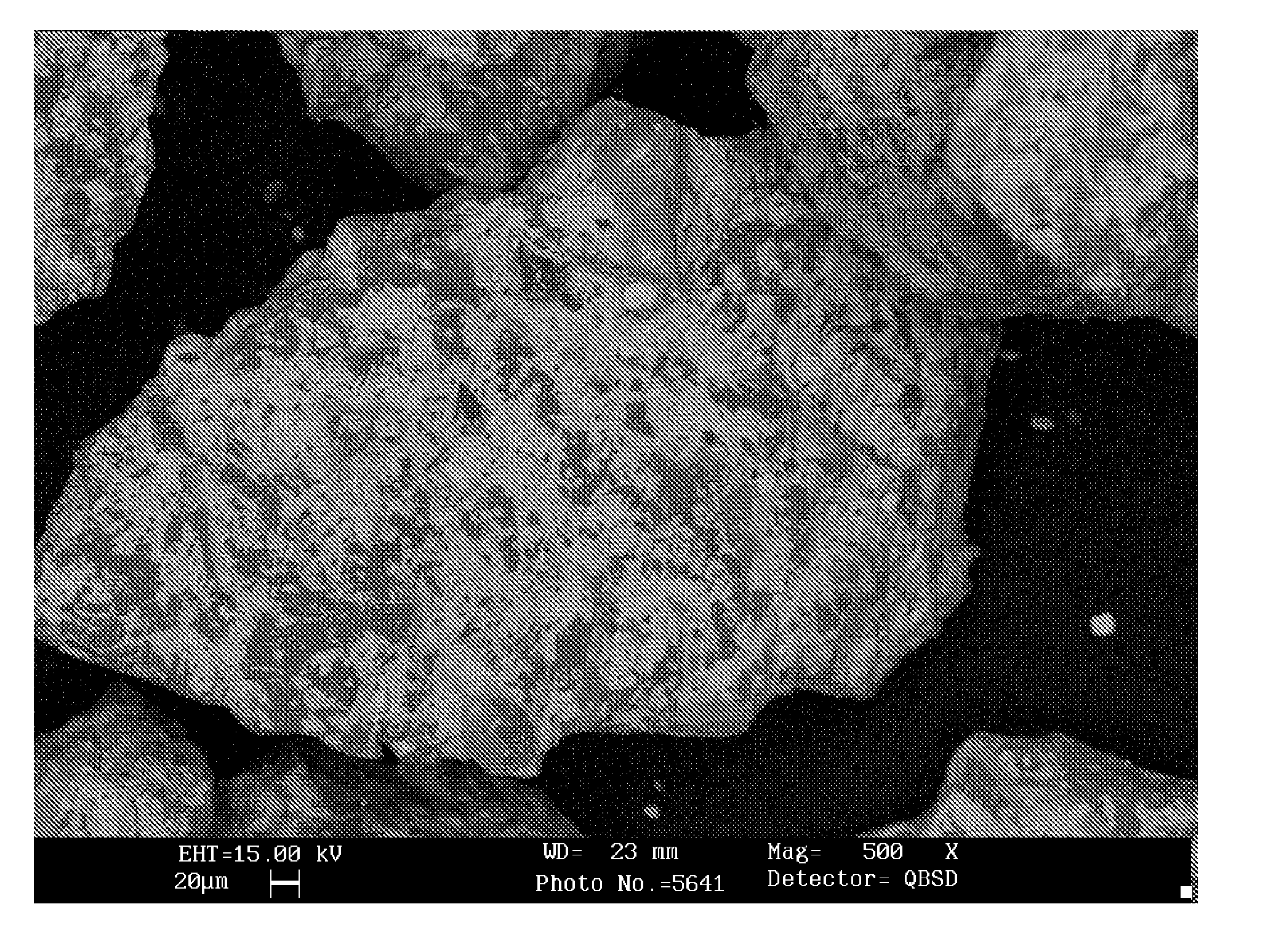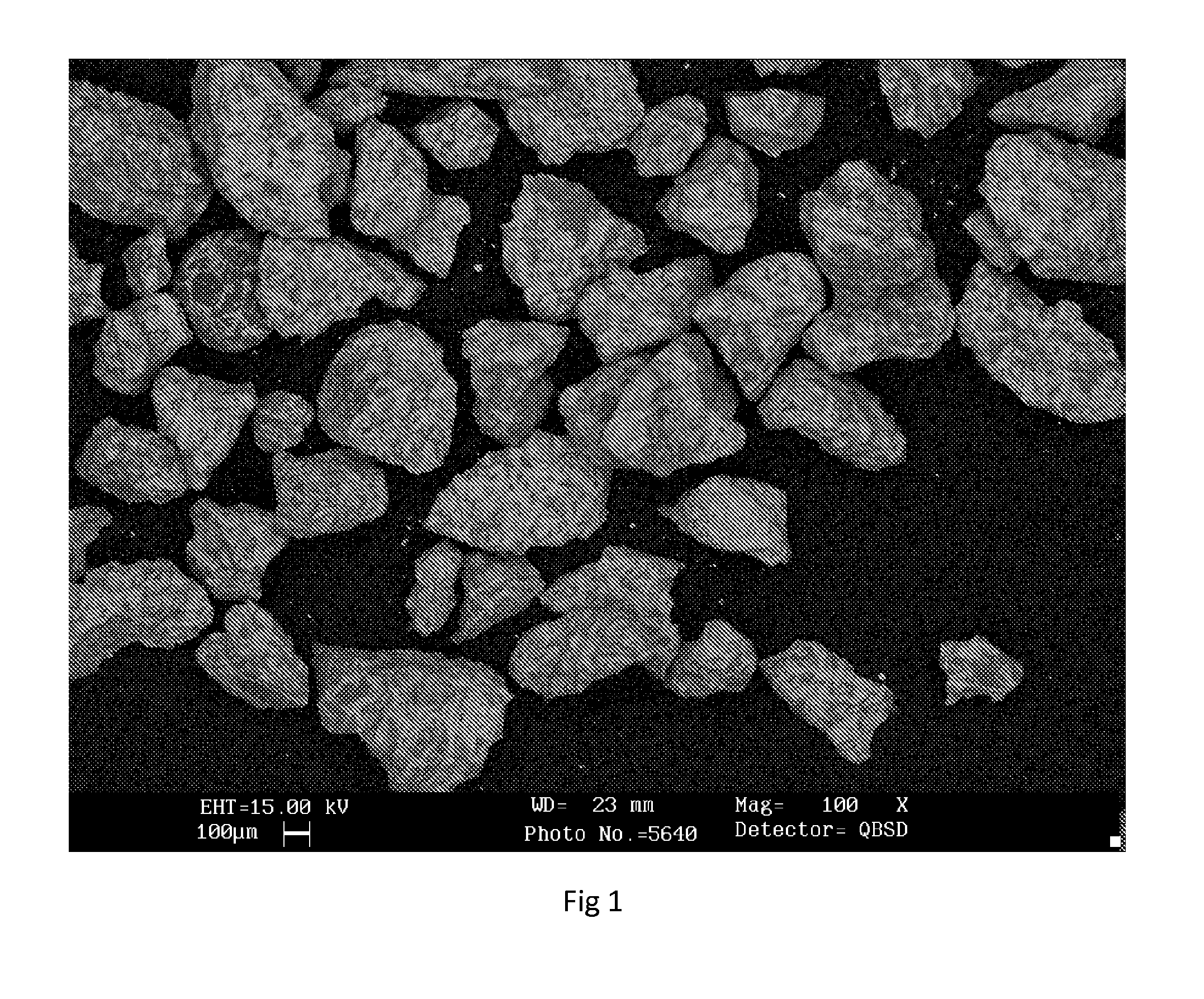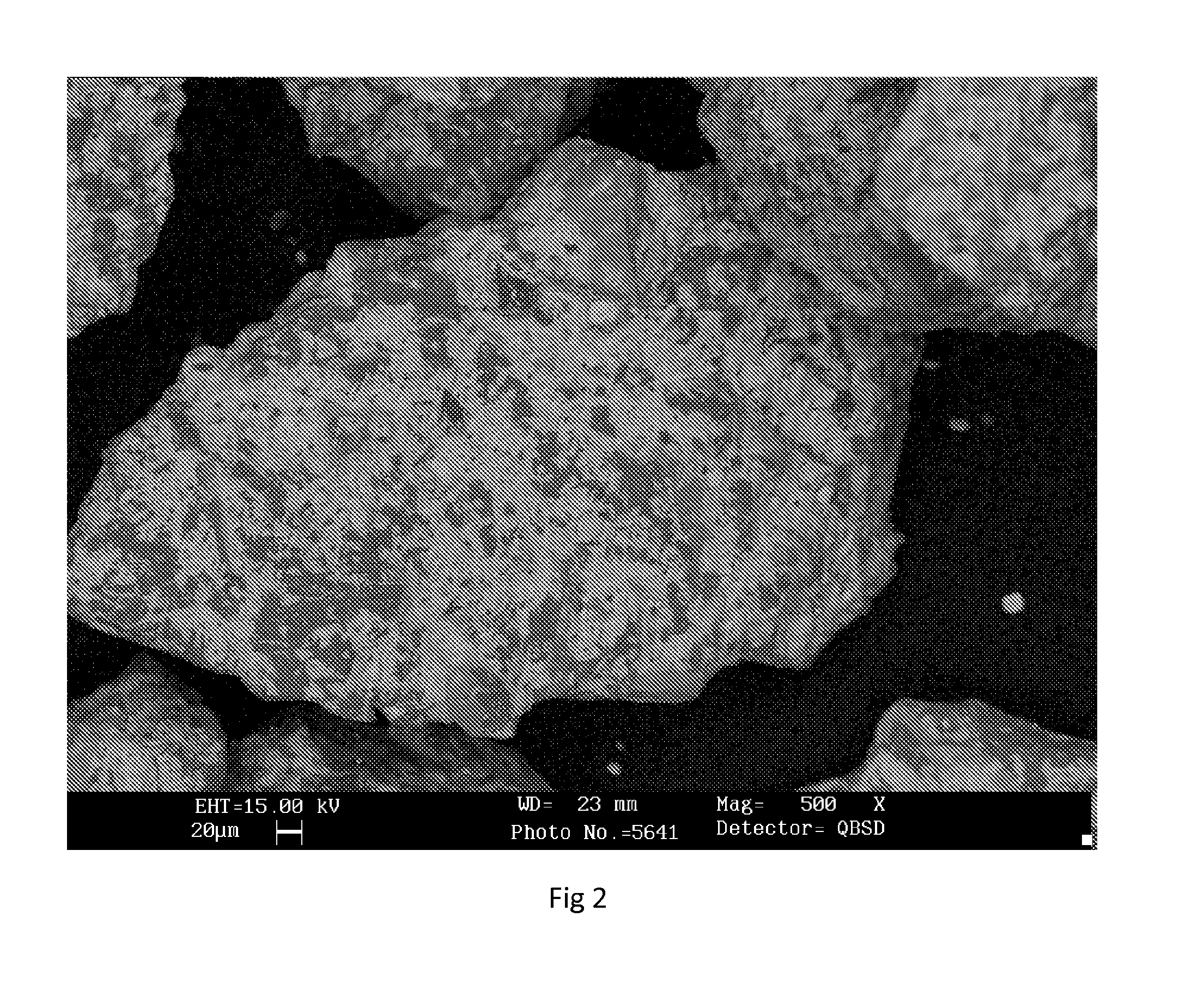Inoculant with surface particles
a surface particle and inoculant technology, applied in blast furnace details, metal-working equipment, blast furnaces, etc., can solve the problems of poor efficiencies, slow cooling, hard and brittleness, etc., and achieve good uniformity of metallurgical structure and limit the risk of degeneration
- Summary
- Abstract
- Description
- Claims
- Application Information
AI Technical Summary
Benefits of technology
Problems solved by technology
Method used
Image
Examples
example 1
Inoculant According to the Prior Art (Reference)
[0085]A spheroidal graphite cast-iron bath has been treated at a rate of 0.3% by weight with an inoculant alloy of the type FeSi75 and containing 0.8% by mass of aluminum and 0.7% by mass of calcium.
[0086]The treatment is performed by adding the inoculant in the cast-iron ladle, before filling the mold.
[0087]The amount of equivalent carbon (Ceq) of the cast-iron is at 4.32% (calculated according to the simplified formula: Ceq=% C+⅓(% Si+% P) wherein % C, % Si and % P are the carbon, silicon and phosphorus contents of the cast-iron).
[0088]The residual magnesium of the cast-iron is at 400 thousandths.
[0089]Afterwards, the cast-iron has been cast in a BCIRA-type mold.
[0090]At a thickness of 6 mm, the treated cast-iron presents the following characteristics:
[0091]Structure of the matrix: 55% of pearlite, 15% of ferrite, 30% of cementite
[0092]Number of nodules per mm2: 270
[0093]VI-type graphite: 57%
[0094]Average nodularity: 85%
[0095]Average...
example 2
Inoculant According to the Invention
[0096]A spheroidal graphite cast-iron bath has been treated at a rate of 0.3% by mass with an inoculant according to the invention having the following composition:
[0097]Alloy of support particles: FeSi75, and containing 0.8% by mass of aluminum and 0.7% by mass of calcium,
[0098]Surface particles: 1.5% by mass of CaSi particles having a size smaller than 50 microns and 1.5% by mass of metallic aluminum particles having a size smaller than 50 microns,
[0099]Binder: 10% by mass of an aqueous solution of PVP,
[0100]Bonding deposit of surface particles carried out by fluidization at 100° C.
[0101]The treatment is performed by adding the inoculant in the cast-iron ladle, before filling the mold.
[0102]The amount of equivalent carbon (Ceq) of the cast-iron is at 4.32%.
[0103]The residual magnesium of the cast-iron is at 400 thousandths.
[0104]Afterwards, the cast-iron has been cast in a BCIRA-type mold.
[0105]At a thickness of 6 mm, the treated cast-iron prese...
example 3
Inoculant According to the Invention
[0111]A spheroidal graphite cast-iron bath has been treated at 0.3% by mass with a product constituted by:
[0112]a support alloy: FeSi75 with Al=0.8% by mass and Ca=0.7% by mass,
[0113]surface particles: 2.5% by mass of Bismuth Bi particles having a size <100 μm, and 2.5% by mass of particles of the ferrosilico-rare earths (FeSiRE) alloy having a size <100 μm,
[0114]Binder: 10% by mass of an aqueous solution of PVP,
[0115]Bonding deposit of surface particles carried out by fluidization at 100° C.
[0116]The treatment is performed by adding the inoculant in the cast-iron ladle, before filling the mold.
[0117]The amount of equivalent carbon (Ceq) of the cast-iron is at 4.32%. The residual magnesium is at 420 thousandths.
[0118]The cast-iron is cast in a BCIRA-type mold.
[0119]At the thickness of 6 mm, the cast-iron presents the following characteristics:
[0120]Structure of the matrix: 50% of pearlite, 50% of ferrite, 0% of cementite
[0121]Number of nodules per...
PUM
| Property | Measurement | Unit |
|---|---|---|
| Length | aaaaa | aaaaa |
| Fraction | aaaaa | aaaaa |
| Fraction | aaaaa | aaaaa |
Abstract
Description
Claims
Application Information
 Login to View More
Login to View More - R&D
- Intellectual Property
- Life Sciences
- Materials
- Tech Scout
- Unparalleled Data Quality
- Higher Quality Content
- 60% Fewer Hallucinations
Browse by: Latest US Patents, China's latest patents, Technical Efficacy Thesaurus, Application Domain, Technology Topic, Popular Technical Reports.
© 2025 PatSnap. All rights reserved.Legal|Privacy policy|Modern Slavery Act Transparency Statement|Sitemap|About US| Contact US: help@patsnap.com



